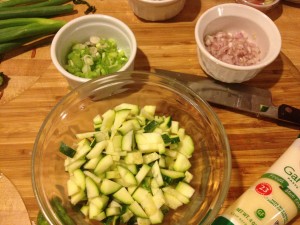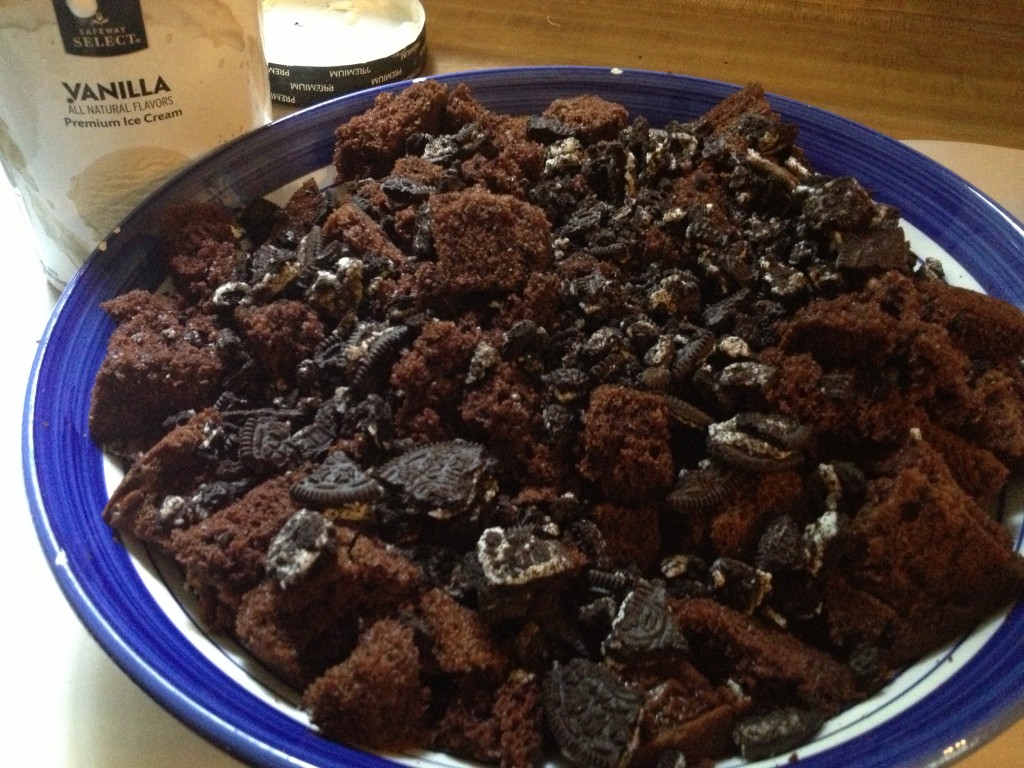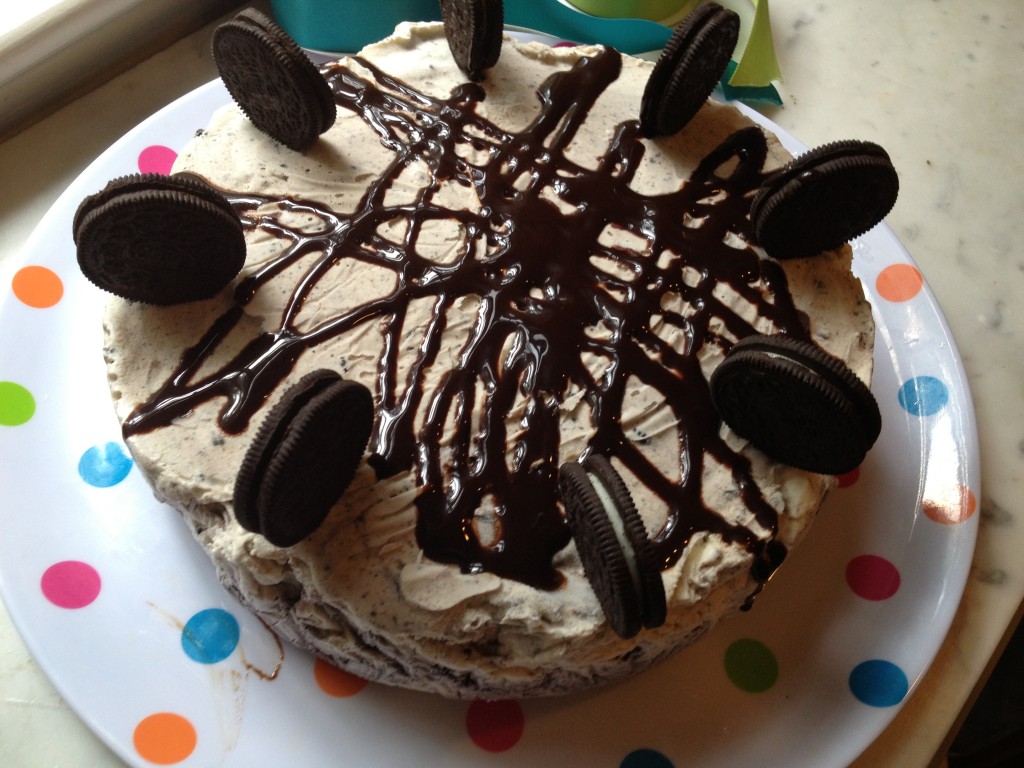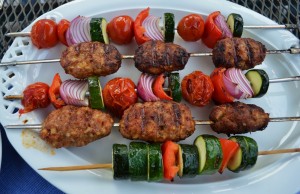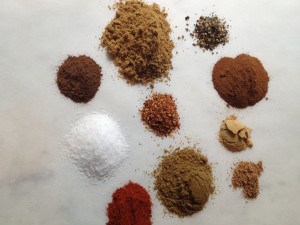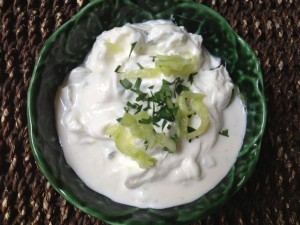
Seattle chef Tom Douglas wrote an entire book on crab cake recipes.
Photo by Allison Beuker.
In Feelin’ Crabby: Part One we talked about the debate over the ‘perfect’ crab cake and what that means to mid-Atlantic cooks and eaters, and to Marylanders, in particular.
We shared a classic
Maryland’s Way Cook Book recipe from 1966 recommended by Corks & Cake contributor, Kathryn Michel, and we thought it only fair and balanced (ahem) to share two more classic crab cake recipes.
Just like the Carolinas and Texas have their barbecue debates, people along the mid-Atlantic have been going at it in their crab cake debates. It turns out that the devil is in the DETAILS, as they say, because most Marylanders will agree on three basics (but the rest is up for argument):

Maryland Blue Crab.
1) Use lump (or backfin) blue crab, fresh and pasteurized, NOT FROM A CAN. Blue crab from Maryland or Virginia is preferred but our local fishing industries have hit hard times (crab production is in environmental jeopardy; Maryland watermen cannot break even.)
Maryland hostesses (and very many caterers and restaurants) have had to admit they have bought crab caught and processed in Venezuela because it is cheaper and more available. Maryland’s Department of Natural Resources started a campaign called “True Blue” that promotes restaurants that serve Maryland certified Chesapeake Bay crab with a special logo for their menus and signage. That way consumers will know what they are buying. Look for the logo.
2) Use little filler to bind. That is a given, but there is much discrepancy whether the binding agent be fresh bread crumbs soaked in milk, fresh bread crumbs NOT soaked, or crushed saltines. Mayonnaise as a binding aging with or without fresh bread crumbs is controversial.
3) There is some flavoring but it is very subtle. Old Bay seasoning is NOT a given (for example, none is used in the Maryland’s Way recipe). Seasoning usually takes form in a little bit of dry mustard or wet mustard, Worcestershire (a dash), Tabasco (a dash), or parsley and lemon. Onions, shallots, chives, garlic, capers, green or red peppers, and herbs other than parsley: all CONTROVERSIAL.
How you cook them is also subject to debate. Pan fry in butter, pan fry in oil, broil, deep fry (NO! says Rebecca), or pan fry in butter/oil
and then finish in oven are all legitimate planks in the debate.
Chef
Tom Douglas (a successful Seattle restaurateur and Delaware native who grew up eating and cooking crab on mid-Atlantic beaches) puts the debate in context for the restaurant business in his introduction to the
I Love Crab Cakes book:
“Where do you get the best crab cakes? Ask that question to a hundred people and you’re likely to get a hundred different answers….Restaurants can be made or broken on their crab cake reviews. The rewards for the positive are lines out the door. Beware the poor fellow who gets dinged for using ‘using too much filler’, a common reference for too many crumbs in your cake, for he shall hang his head in shame.”

Photo credit: Howard L. Puckett, Coastal Living
I think if you practice your technique, put your love (and pocketbook) into it, then the best, most classic, genre-defining crab cake will come from your kitchen. That crab cake will be the one your loved ones love, the one they ask you to make on special occasions like their birthday, graduations or when they are home on holiday.
Here’s Tom Douglas’s recipe for Chesapeake Bay Classic Crab Cakes (which I have made often and adapted by using Hellman’s mayonnaise instead of making my own and substituting shallots for the scallions):
Chesapeake Bay Classic Crab Cakes
- 1/4 C. good quality mayonnaise (Hellman’s)
- 1 T. Dijon mustard
- 1 T. Old Bay Seasoning
- 1 T. fresh lemon juice
- 1 T. minced shallots, sauteed lightly in 1/4 tsp. of butter
- 5 T. unsalted butter
- 1 pound lump crab meat, drained and picked clean of shell
- 4 C. fresh bread crumbs
- 1/4 C. chopped parsley

Crab cakes dressed for company with sriracha remoulade.
Photo by John Penovich. Food styling by Rebecca Penovich.
Directions
- In a small saute pan over low heat, melt 1 T. unsalted butter. Add the chopped shallot and cook over low heat until shallots have released their water but are not brown. Let cool.
- In a bowl with the mayonnaise, add the 1 T. mustard, 1 T. Old Bay Seasoning, 1 T. fresh lemon juice and fold with a spatula until combined. Add the crab meat to the mayonnaise mixture and fold gently until evenly mixed. Do not break up lumps and do not overmix.
- Place the fresh bread crumbs and chopped parsley in a single layer onto a platter or baking sheet lined with parchment. Gently scoop ½ C. portions of crab mixture and shape into patties. Place the crab cake on the crumbs, and sprinkle crumbs over the top. Turn the cake over and sprinkle with more crumbs. Repeat to make the remaining crab cakes, 10-12 in all. Cover and refrigerate for at least 1 hour or more. (Chef Douglas recommends leaving the formed crab cakes on the platter or baking sheet of crumbs and wrapping the whole thing.)
- In a large nonstick frying pan over medium heat, melt 2 T. of butter. When the butter is melted, gently slide half of the crab cakes into the pan (give them room in order to turn them.) Cook each side until golden brown, about 4 minutes per side. If crab cakes are browning too quickly, reduce the heat. Melt 2 more T. of butter to do the second batch. Keep cakes warm in a low oven.
- Serve with your choice of sauce and lemon wedges.

Photo credit: fitchicla.com
A Corks & Cake friend, Kay Krogh Gallagher, submitted a comment with her absolute favorite crab cake recipe from the venerable Vidalia restaurant in Washington, DC. Vidalia’s award-winning chef and owner Jeffrey Buben knows a thing or two about regional American cuisine with Southern influence and his version of the crab cake has been on Vidalia’s menu since the restaurant’s opening 20 years ago. It is a top seller.
Vidalia’s recipe is classic on the crab cake spectrum (lump meat, delicate hand, saltines as filler) but calls for 2 tsp. of chopped cilantro which Kay says adds something special.
The following recipe was published in Washingtonian magazine, Recipe Sleuth, Anna Spiegel, July 13, 2011.
Vidalia’s Crabcake
Makes 4
- 1 pound Maryland jumbo-lump crab meat (picked and checked for shell or cartilage)
- 8 saltine crackers, crushed
- 2 teaspoons chopped fresh cilantro
- 1 egg, beaten
- 1 tablespoon Duke’s mayonnaise
- 1 tablespoon unsalted butter at room temperature
- 1 teaspoon Dijon mustard
- ¼ teaspoon Worcestershire sauce
- 1 dash hot-pepper sauce, such as Tabasco
- 3 tablespoons vegetable oil
- Salt and freshly ground pepper to taste
Directions
- In a medium bowl, combine crab meat, saltines, cilantro, salt, and pepper. In a separate bowl, beat together the egg, mayonnaise, butter, mustard, Worcestershire, and hot sauce. Combine that mixture with the crab meat and mix well.
- Shape the mixture into 4 crabcakes and refrigerate for at least 1 hour, and up to 24.
- Heat 3 tablespoons of vegetable oil in a non-stick frying pan over medium-high heat until the oil is hot. Sauté the crabcakes in batches until golden brown on each side, about a total of 3 to 5 minutes. Set on a paper towel momentarily when they’re done.
- Serve immediately, garnish with tartar sauce, a mustard buerre blanc, or other mustard-based sauce.






















